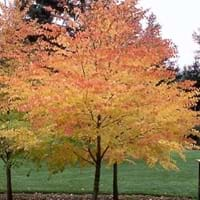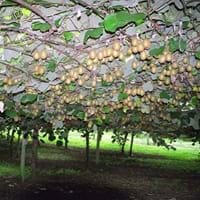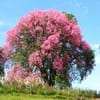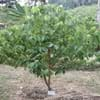Life Span
Perennial
Perennial
Origin
Eastern Asia, China, Japan
China
Types
Heronswood Globe , Kreukenberg Dwarf
Actinidia deliciosa chlorocarpa, Actinidia deliciosa deliciosa
Habitat
shaded moist road banks, Wet Woods
Mountain forests
USDA Hardiness Zone
4-8
6-9
Sunset Zone
2b, 3a, 3b, 4, 5, 6, 14, 15, 16, 18, 19, 20
4, 5, 6, 7, 8, 9, 12, 14, 15, 16, 17, 18, 19, 20, 21, 22, 23, 24
Habit
Oval or Rounded
Vining/Climbing
Minimum Width
Not Available
Flower Color
Red, Green
Light Yellow, Ivory
Flower Color Modifier
Bicolor
Bicolor
Fruit Color
Green, Copper, Sandy Brown
Tan, Brown
Leaf Color in Spring
Purple, Light Green, Bronze
Green, Light Green
Leaf Color in Summer
Green
Green
Leaf Color in Fall
Yellow, Gold, Orange Red
Light Green, Yellow green
Leaf Color in Winter
Not Available
Light Green
Leaf Shape
Heart-shaped
Heart-shaped
Plant Season
Spring, Summer, Fall, Winter
Spring, Summer, Fall
Sunlight
Full Sun, Partial Sun
Full Sun, Partial Sun
Type of Soil
Clay, Loam
Clay, Loam
The pH of Soil
Acidic, Neutral
Acidic, Neutral
Soil Drainage
Well drained
Average
Bloom Time
Early Spring
Late Spring, Early Summer
Tolerances
Not Available
Drought
Where to Plant?
Ground
Ground
How to Plant?
Seedlings, Transplanting
Layering, Softwood cuttings
Plant Maintenance
Medium
Medium
Watering Requirements
Keep ground moist, Use Mulches to help prevent water loss during hot and windy weather
Water daily during growing season
In Summer
Lots of watering
Lots of watering
In Spring
Moderate
Moderate
In Winter
Average Water
Average Water
Soil pH
Acidic, Neutral
Acidic, Neutral
Soil Type
Clay, Loam
Clay, Loam
Soil Drainage Capacity
Well drained
Average
Sun Exposure
Full Sun, Partial Sun
Full Sun, Partial Sun
Pruning
Prune if you want to improve plant shape, Remove dead branches
Prune for shortening long shoots, Prune in early summer, Prune in late winter
Fertilizers
All-Purpose Liquid Fertilizer, Apply 10-10-10 amount
Self-fertile
Pests and Diseases
Bacterial leaf spot, Leafminers, Red blotch
Armillaria root rot, Armored scales, Bleeding canker, Botrytis Blight, Crown gall, Nematodes, Phytophthora Root Rot, Red blotch
Plant Tolerance
Salt and Soil Compaction, Shade areas, waterlogging
Drought
Flowers
Insignificant
Showy
Flower Petal Number
Not Available
Single
Foliage Texture
Medium
Medium
Foliage Sheen
Matte
Matte
Attracts
Birds, Butterflies
Not Available
Allergy
sneezing, Sore eyes
Inflammation, Mouth itching, Throat itching
Aesthetic Uses
Beautification, Cottage Garden
Not Used For Aesthetic Purpose
Beauty Benefits
Making cosmetics, Skin Problems
Beautiful Skin, Protects from sun damage
Environmental Uses
Shadow Tree, soil stabilisation
Air purification
Medicinal Uses
Not Available
constipation, Heart problems, Low Blood Pressure
Part of Plant Used
Whole plant
Fruits
Other Uses
Showy Purposes, Used as Ornamental plant, Used in pulpwood and lumber production
Used As Food, Used for its medicinal properties
Used As Indoor Plant
No
No
Used As Outdoor Plant
Yes
Yes
Garden Design
Feature Plant, Shade Trees, Street Trees
Edible, Fruit / Fruit Tree, Rock Garden / Wall, Vine
Botanical Name
CERCIDIPHYLLUM japonicum
ACTINIDIA deliciosa
Common Name
Katsura Tree
Chinese Gooseberry, Fuzzy Kiwi, Kiwi
In Hindi
Cercidiphyllum
कीवी फल
In German
Kuchenbäume
Kiwi, Chinesischer Strahlengriffel
In French
Cercidiphyllum
Kiwi, Groseille de Chine, Yang Tao, Souris végétale
In Spanish
Cercidiphyllum
kiwi, kivi, actinidia
In Greek
Cercidiphyllum
Ακτινίδια
In Portuguese
Cercidiphyllum
Quiuí
In Polish
Grujecznik
Owoc kiwi
In Latin
Cercidiphyllum
Kiwi fructum
Phylum
Magnoliophyta
Magnoliophyta
Class
Magnoliopsida
Magnoliopsida
Order
Hamamelidales
Ericales
Family
Cercidiphyllaceae
Actinidiaceae
Genus
Cercidiphyllum
Actinidia
Clade
Angiosperms, Eudicots
Angiosperms, Asterids, Eudicots
Tribe
Not Available
Not Available
Subfamily
Not Available
Not Available
Season and Care of Katsura Tree and Kiwifruit
Season and care of Katsura Tree and Kiwifruit is important to know. While considering everything about Katsura Tree and Kiwifruit Care, growing season is an essential factor. Katsura Tree season is Spring, Summer, Fall and Winter and Kiwifruit season is Spring, Summer, Fall and Winter. The type of soil for Katsura Tree is Clay, Loam and for Kiwifruit is Clay, Loam while the PH of soil for Katsura Tree is Acidic, Neutral and for Kiwifruit is Acidic, Neutral.
Katsura Tree and Kiwifruit Physical Information
Katsura Tree and Kiwifruit physical information is very important for comparison. Katsura Tree height is 1,220.00 cm and width 1,220.00 cm whereas Kiwifruit height is 610.00 cm and width Not Available. The color specification of Katsura Tree and Kiwifruit are as follows:
Katsura Tree flower color: Red and Green
Katsura Tree leaf color: Purple, Light Green and Bronze
Kiwifruit flower color: Light Yellow and Ivory
- Kiwifruit leaf color: Green and Light Green
Care of Katsura Tree and Kiwifruit
Care of Katsura Tree and Kiwifruit include pruning, fertilizers, watering etc. Katsura Tree pruning is done Prune if you want to improve plant shape and Remove dead branches and Kiwifruit pruning is done Prune for shortening long shoots, Prune in early summer and Prune in late winter. In summer Katsura Tree needs Lots of watering and in winter, it needs Average Water. Whereas, in summer Kiwifruit needs Lots of watering and in winter, it needs Average Water.





